If you want the best result, there is usually a correct order of doing each step associated with a task. Consider something as simple as cleaning your car.
I’m no expert when it comes to cars — or cleaning — but I know that it’s smart to start with flushing it. I know, because I’ve actually tried to skip that step, and go straight to sponge washing. It’s not optimal, trust me. It’ll take you a lot longer, at best.
Then there’s the wax and shine. Even I realise that it’s smart to get the dirt off before you get to this part. At least if you care about the result.
When it comes to cleaning cars, there is a clear order to how you should arrange each step. In running training, how we arrange each step, or type of training, is not quite as obvious.
And this is where periodisation comes in. Periodisation is, put simply, the art and science of how we structure our training. Both in smaller blocks of weeks and months, and over longer time periods.
Defining Periodisation
“Periodisation is structuring training load in an optimal manner in the short (sessions/weeks) and long (months/years) term to achieve peak fitness at the desired moment.”
Espen Tønnessen, OLT
Or, more plainly, periodisation is to alternate the structure of your training throughout the year in order to perform when it matters.
But does periodisation matter? While there is an optimal running workout intensity, variation is important. Doing the same thing every week, month and year will lead to stagnation. The antidote is to implement variation in your training throughout the year.
If you are a runner with performance goals, it is important to understand the fundamentals of periodisation. Why the beginning of your training year should look a certain way, and when and how to change your approach.
Read on to learn everything you need to know about how to structure your running throughout the year.
A Short History of Periodisation in Running
Sports periodisation has its roots in biology, and how the body adapts to stress. Improvement, or strengthening, is a result of cyclic exposure to a stressor. As long as the applied stressor is at the appropriate level and duration, the response will be productive adaptation.
However, if the stressor is too strong, or applied for too long, the result will be exhaustion. In this case, the body is unable to recover, and the result will be an overall decrease in capacity.
To ensure a positive response to training, it is imperative to apply the appropriate load. Furthermore, the duration has to be sufficient to stimulate adaption, but avoid exhaustion.
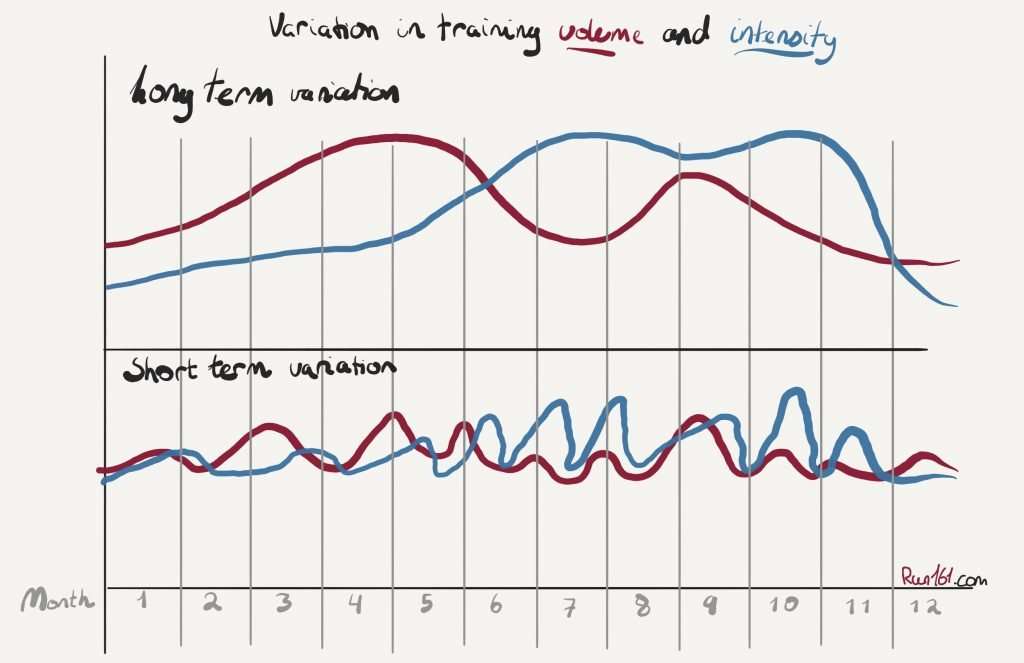
Modern periodisation theories originates from the periodisation model introduced by Russian physiologist Leo Matwiejew—picture above. Based on training data from Soviet athletes ahead of the 1952 and 1956 Olympics, he laid the foundation for sports periodisation theories.
This model essentially encompasses every relevant concept that you need to learn to get a clear grasp of periodisation—both in terms of what it is, and how we apply it to training.
The Construction of a Running Training Plan
A deliberate and well constructed training plan consists of different components. Each component of the plan has distinct objectives. Overall training load, and composition of volume and intensity will differ between each component of the plan.
Each block of training aims to facilitate a smooth transition into the following phase. Ultimately, the goal of a plan is to maximise the athlete’s ability to perform during competition.
What are the different components of a training plan, and what defines them? Let’s dive into the specifics.
Macrocycle
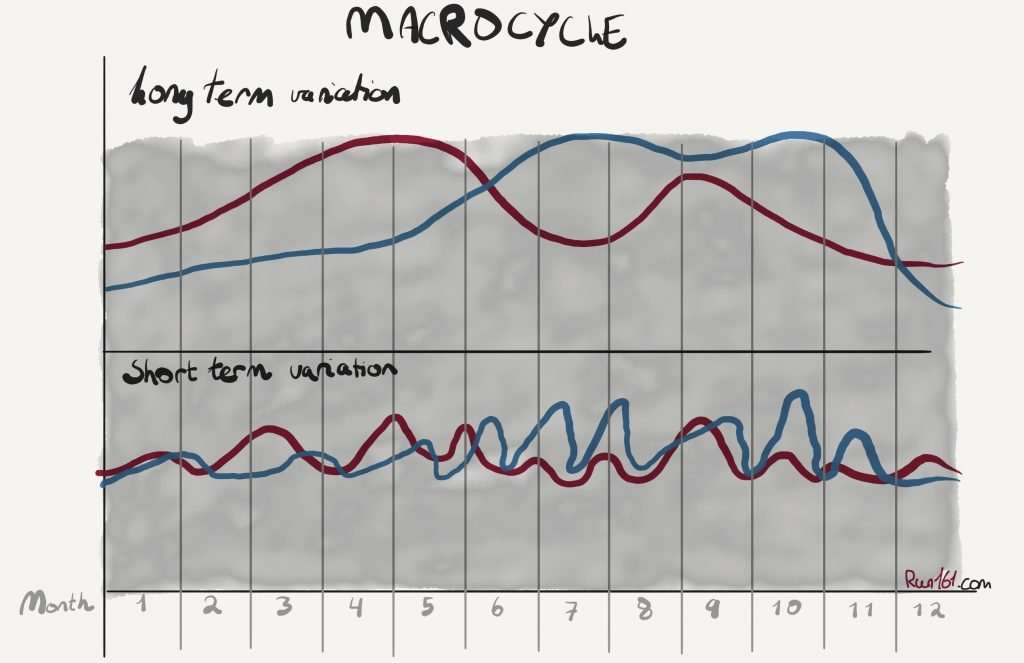
At the very highest level of periodisation in running training is the macrocycle. It is a long term sketch of the training an athlete will go through to reach their goals. Normally, the macrocycle will be an annual plan.
A macrocycle always consists of three distinct phases.
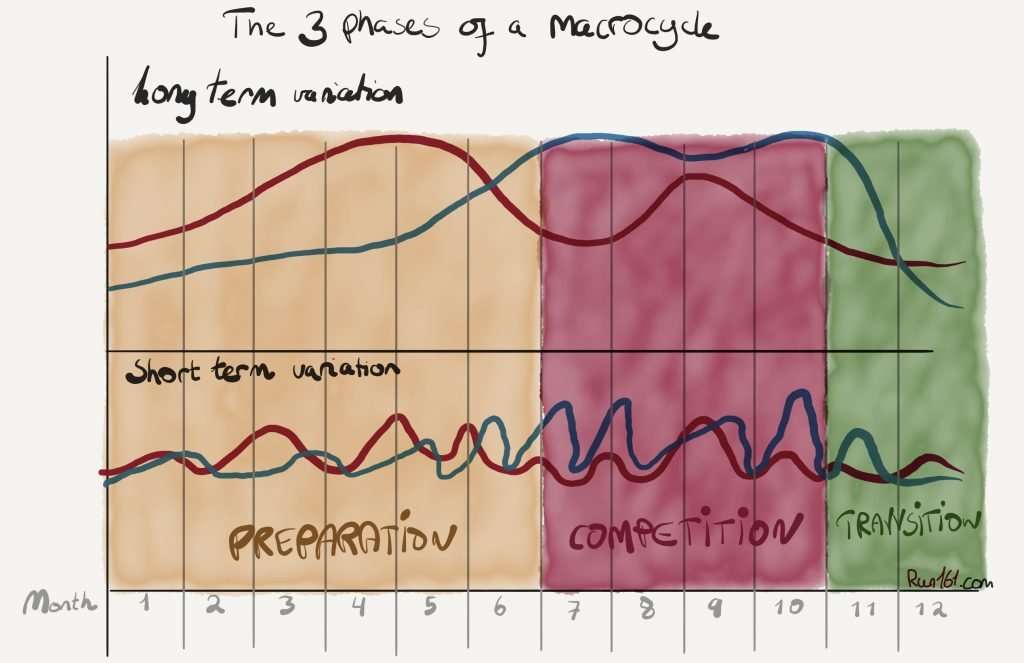
Preparation Phase
Preparation is the first phase of the macrocycle. It typically spans from half to three thirds of the annual cycle. This phase starts with general preparation, before transitioning into specific preparation. We can further divide it into three sub-phases.
- Retraining: Focus on regaining previous training. Getting back to pre-transition phase fitness levels. Training is characterised by increasing volume, and relatively low intensity.
- Specific: Overall training volume decreases, and intensity increases as race specific training is introduced.
- Taper: During this phase the overall training is reduced. While some prefer keeping intensity similar to during the specific phase, others prefer to reduce intensity as well. Tactical and mental preparations become increasingly important.
Competition Phase
The main objective during this phase is, naturally, to perform in competitions. An athlete will normally compete frequently during this phase, although their priority will be to peak for one or two specific competitions.
Transition Phase
After completing the main objective of the macrocycle, the focus shifts. Rest and recovery is paramount after a long period of training followed by competition. Mental recovery should be a priority, but some degree of reflection is necessary to facilitate the transition into a new macrocycle.
Planning at the level of the macrocycle and its phases is an essential part of establishing an overarching training plan. However, we need a more detailed approach as well.
Mesocycle
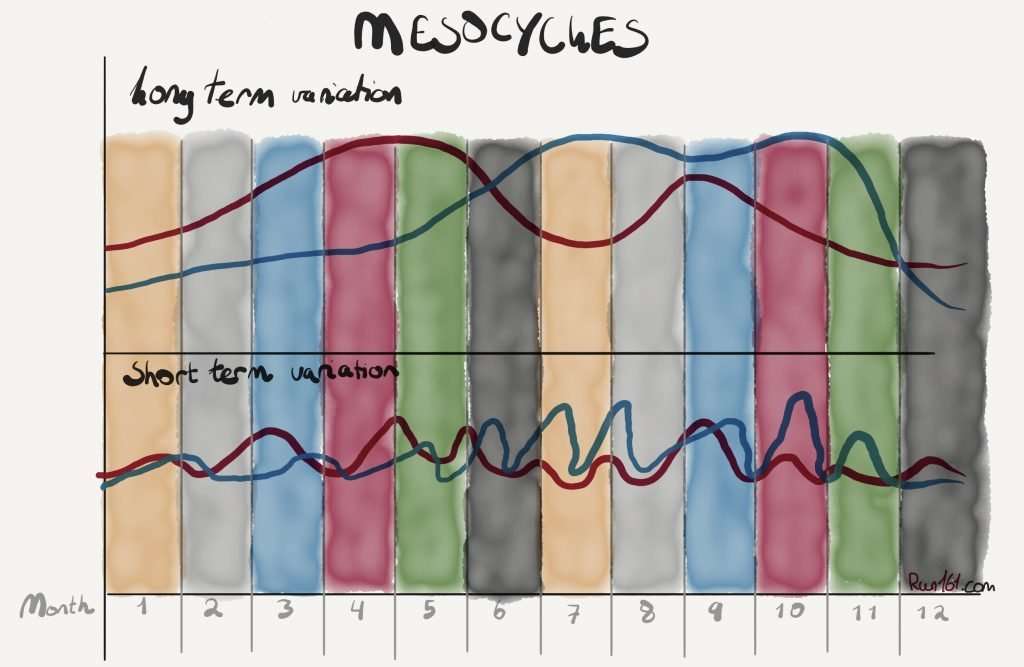
Enter the mesocycle. It is a smaller block of training characterised by focus on a set of specific physical adaptations.
In the early stages of the preparation phase, it is common to focus on building a runner’s aerobic capacity and muscular endurance. Hence the focus on volume as opposed to intensity.
For runners, the duration of a mesocycle is typically between 4-6 weeks. However, placement in the macrocycle will influence the duration.
Microcycle
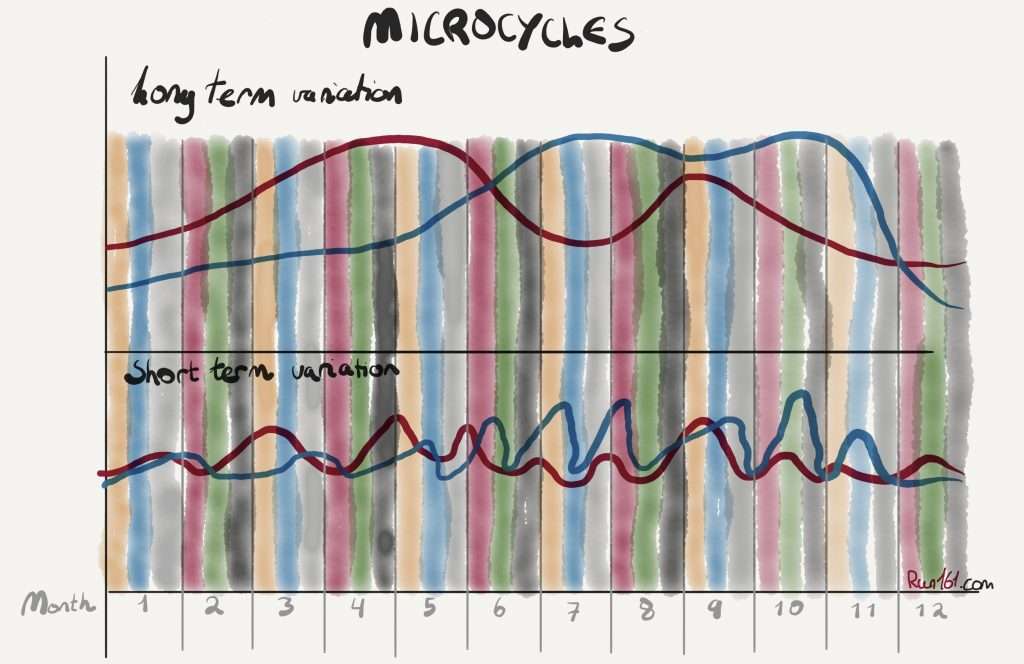
Microcycles are the smallest blocks of training days in a plan. While they commonly last a week, many coaches and athletes define microcycles as 10 or even 14 day periods.
Each microcycle comes with a clearly defined goal for total training load. This will vary from cycle to cycle, depending on where it falls within the mesocycle. A normal approach is to increase the target load for two to three microcycles, followed by a cycle with reduced load to facilitate recovery and absorption of the preceding training.
The particulars of a microcycle is dictated by where it falls within the overall macrocycle.
Key Takeaways About Periodisation of Running Training
You should have an overarching plan of your full training year—a macrocycle. This plan should be divided into three distinct phases: preparation, competition and transition.
Furthermore, you should segment your training into blocks—mesocycles—of four to eight weeks where you focus on a particular element of training. Each mesocycle consists of between two and four microcycles.
The first one or two mesocycles of the preparation phase should have a focus on increasing training volume, and regaining previous fitness levels. Intensity is kept relatively constant.
As you approach the competition phase, the training focus should turn towards more specific work. Intensity increases, while volume is reduced slightly. The last stage of the preparation phase is the taper, where volume is decreased significantly.
During the competition phase, training volume is varied according to the competitive schedule. Intensity should be at a high level, to retain competitive sharpness.
The season ends with the transition phase, where volume and intensity are both reduced. The main priority is recovery.
